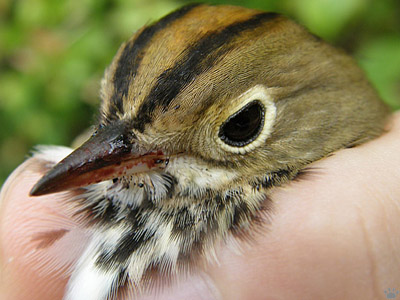
Ovenbird (Seiurus aurocapillus), Coral Gables. |
Florida, part 16: Songbirds
As much of the eastern North America, Florida has somewhat limited songbird diversity: just about forty native species breed on the Peninsula. The only time songbird watching gets really exciting is in late Spring, when numerous New World warblers (Parulidae) move in waves through forests and parks. Fall migration is less spectacular, because many species are in less colorful non-breeding plumage.
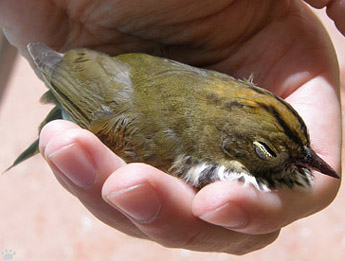 |
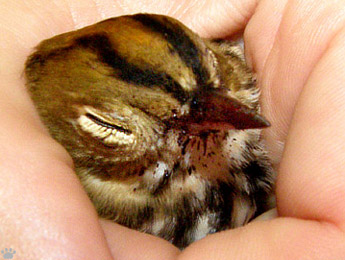 |
| Ovenbird, rescued after hitting a window, Coral Gables. |
 |
The major flyway follows the heavily urbanized eastern coast, where many nighttime migrants die from collisions with buildings, power lines, cell phone towers, lighthouses, wind turbines, and countless other man-made obstacles. |
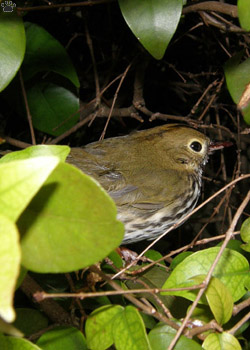 |
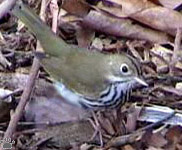
The same ovenbird being released, CG. |
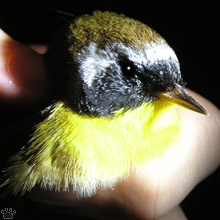
Common yellowthroat (Geothlypis trichas),
rescued after being hit by a car, Everglades Nat'l Park. |
Sometimes you find birds that are still alive, just stunned, and can be brought back to live just by being kept in a safe place for a few hours. |
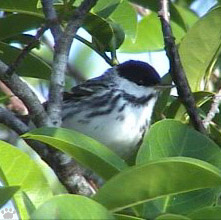
Blackpoll warbler (Dendroica striata),
J. N. Ding Darling National Wildlife Refuge. |

The same common
yellowthroat after release,
ENP. |
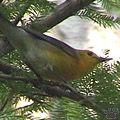
Protonotary warbler
(Protonotaria citrea),
Fisheating Creek. |
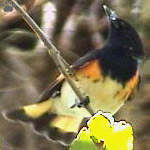 |
On a good spring day, you can sometimes see 5-6 warbler species in the same tree. |
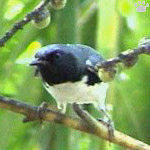 |
 |
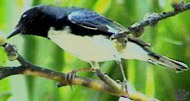 |
| American redstart (Setophaga ruticilla), Big Cypress National Preserve. |
Black-throated blue warbler (Dendroica caerulescens), Coral Gables. |
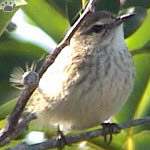
Palm warbler (D. palmarum),
Matheson Hammock State Park. |
Many of them also breed or winter in southern Florida, but only a few species are common outside the time of migration.
|
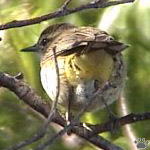
Palm warbler, Enchanted Forest
Elaine Gordon Park. |
 |
 |
| Cape May warbler (D. tigrina), BCNP. |
| Palm, pine (D. pinus) and prairie (D. discolor) warblers are common in the Everglades in winter. |
 |
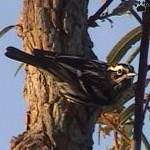 |
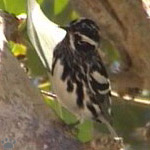 |
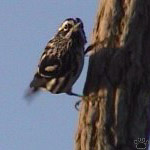 |
 |
| Black-and-white warbler (Mniotilta varia), Arthur R. Marshall Loxahatchee National Wildlife Refuge. |
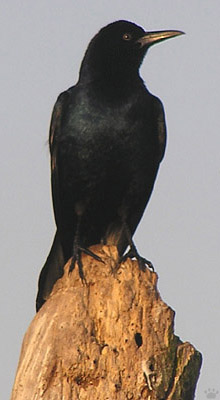
Young common grackle (Quiscalus quiscula), ENP. |
The most conspicuous songbirds of Florida are grackles. There are two species here: the larger boat-tailed grackle is common along seashores and lakeshores, while common grackle nests in woodlands, and feeds in open grasslands, pastures and cities. Both are noisy and have funny courtship displays. They often form mixed flocks with their relatives - blackbirds and cowbirds - and introduced common starlings (Sturnus vulgaris). |
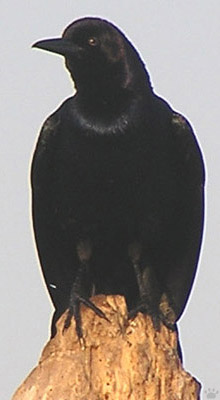
Yong common grackle, ENP. |
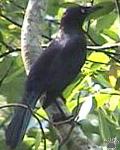
Common grackle near nest,
ENP. |

Common grackle singing,
ENP. |
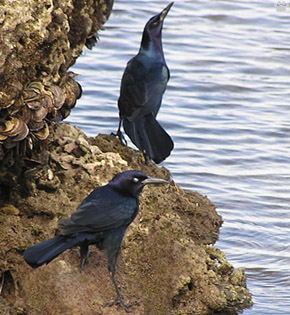
Boat-tailed grackles (Q. major), MHSP. Male is displaying. |
Grackles are highly adaptable hunters: they would follow ploughs looking for worms, fish in shallow water, raid garbage bins, steal food from smaller birds, gather in huge flocks to feed on seeds or berries. They also kill small birds, frogs, sometimes even mice. |
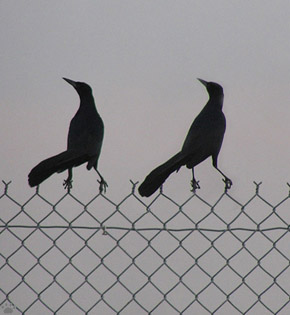
Boat-tailed grackles, Miccosukee Indian Reservation. |
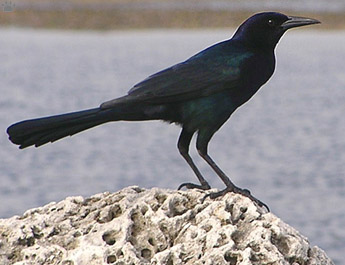 |
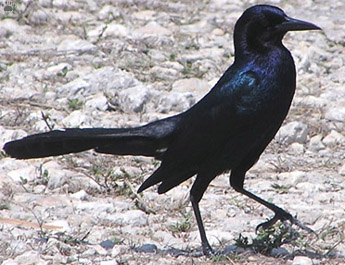 |
| Boat-tailed grackles, MHSP. |

Brown-headed cowbird (Molothrus ater), Ocala National Forest. |
Cowbirds are the only brood parasites in Florida. They lay eggs in the nests of small songbirds. Blackbirds nest in reedbeds, often in huge colonies. |

Red-winged blackbird (Agelayus phoeniceus), Lake Okeechobee. |
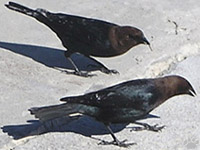
Brown-headed cowbirds, Fort Lauderdale. |
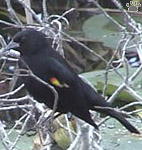
Red-winged blackbird, MIR. |
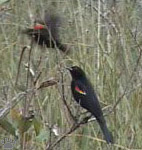
Red-winged blackbird, ENP. |
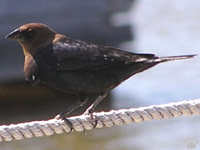
Brown-headed cowbird, Orlando. |
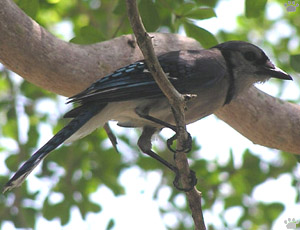
Blue jay (Cyanocitta cristata), Coral Gables. |
Other large songbirds of Florida are jays, crows, thrashers, catbirds and mockingbirds. All are noisy, relatively tame and easy to see. |
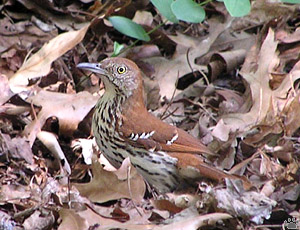
Brown thrasher (Toxostoma rufum), Huguenot Memorial Park. |
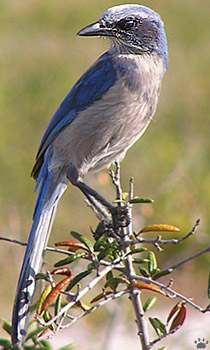 |
 |
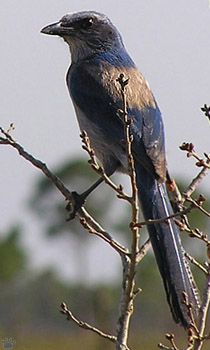 |
| Florida scrub-jays (Aphelocoma coerulescens), Archbold Biological Station. |
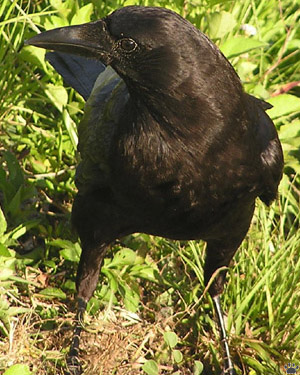
Fishing crow (Corvus ossifragus), ENP. |
Florida scrub-jay is the only endemic bird of the state. A cooperative breeder, it lives in sand scrublands in the central and western parts of the Peninsula. It is still common in good habitat, but its populations are small and fragmented. |

Northern mockingbird (Mimus polyglottos), Coral Gables. |
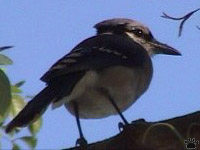
Blue jay, Wekiwa Springs State Park. |
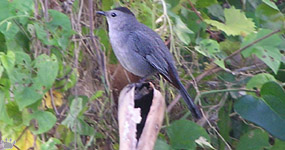
Gray catbird (Dumetella carolinensis), Homestead Air Force Base. |
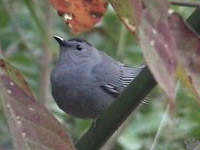
Gray catbird, Highlands Hammock State Park. |

White-eyed vireo (Vireo griseus) sleeping, MHSP. |
Vireos are small insectivorous birds. They are often seen at night, when they sleep on low branches. They are a bit sluggish, and feed by picking crawling insects from tree leaves and branches. There are five species in Florida. |
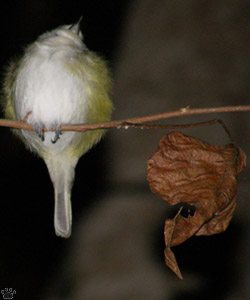
Solitary vireo (V. solitarius) sleeping, HHSP. |
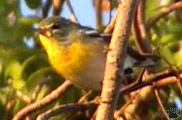
Yellow-throated vireo (V. flavifrons), ENP. |
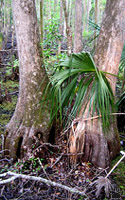 |
Unlike vireos, wrens mostly feed near the ground in dense woods. Of the three Florida species, only Carolina wren breeds locally. |
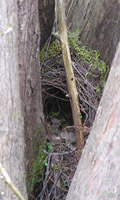 |
 |
 |
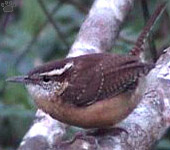 |
| Carolina wren (Thryothorus ludovicianus) and its nest site, HHSP. |
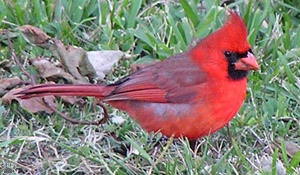
Northern cardinal (Cardinalis cardinalis), CG. |
Northern cardinal is the brightest- colored breeding songbird in Florida. |
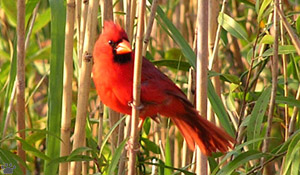
Northern cardinal, Jay B. Starkey Wilderness Park. |
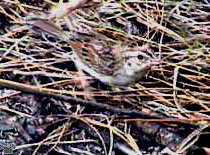
Bachman's sparrow (Aimophila aestivalis),
Sebastian River State Buffer Preserve. |
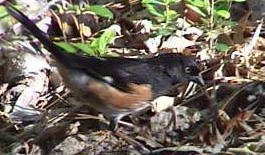
Eastern towhee(Pipilo erythrophthalmus),
Guana River Wildlife Management Area. |

Chipping sparrow (Spizella passerina),
Paynes Prairie State Preserve. |
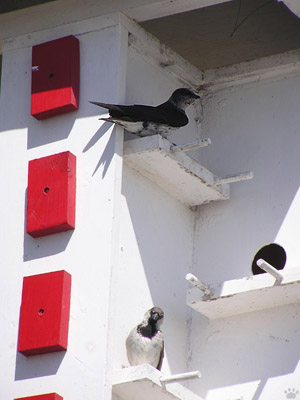
Purple martin (Progne subis) & house sparrow (Passer domesticus),
Homestead. |
Other common songbirds include kingbirds, flycatchers, phoebes, swallows, martins, chickadees, titmice, nuthatches, thrushes, gnatcatchers, kinglets, shrikes, meadowlarks, orioles, buntings, goldfinches, and sparrows. |
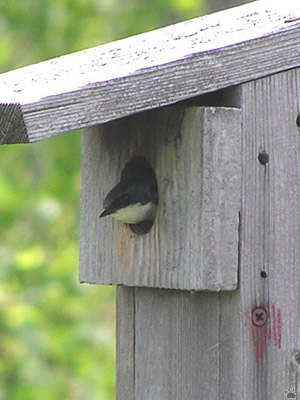
Tree swallow (Tachycineta bicolor), Bull Creek Wildlife
Management Area. |
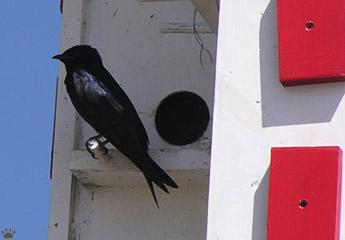 |
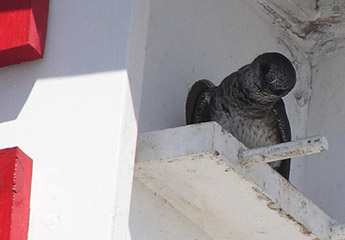 |
| Male (left) and female purple martins, Homestead. |
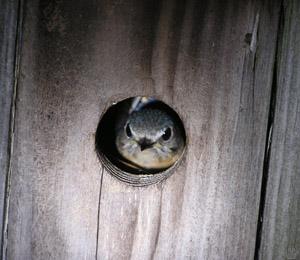
Eastern bluebird (Sialia sialis) in a nestbox, PPSP. |
Some of Florida's songbirds, such as purple martins, Eastern bluebirds, and tree swallows, now mostly depend on nestboxes for breeding. |
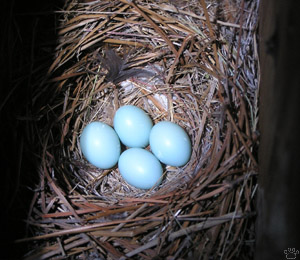
Nest of an eastern bluebird, PPSP. |
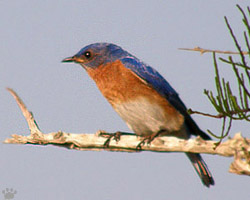
Eastern bluebird, ENP. |
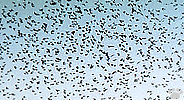
Flock of European starlings
(Sturnus vulgaris), Orlando. |
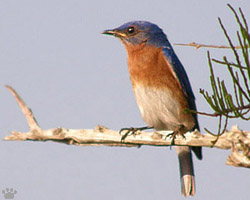
Eastern bluebird, ENP. |
| They have to compete for nest boxes and tree hollows with introduced starlings, mynas and parakeets. |
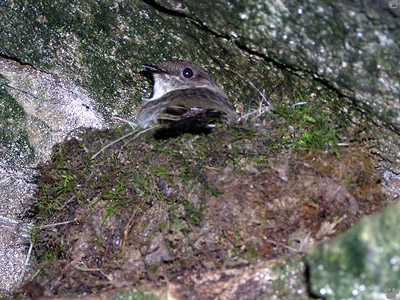
Eastern phoebe (Sayornis phoebe) on a nest, Ichetucknee Springs State Park. |
Part 17. Snakes
Back to Part 15
Home
|





































































